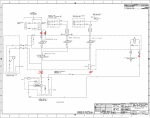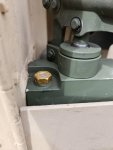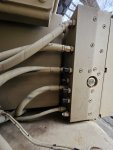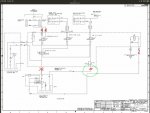aw113sgte
Well-known member
- 914
- 1,424
- 93
- Location
- La Crosse, WI
Had this problem for a while now, with two different pumps.
When lowering the cab (allowing gravity to do it slowly - no pumping on the way down) I get hydraulic fluid pushing out the vent plug. It will do this on successive raise/lower cycles until it pushes out enough I can't even raise the cab (reservoir empty). I have the air/oil pump completely removed (it overflowed when that pump was still on there). The kneeling cylinders are also removed and all lines capped at the manifold. I have no leaks under pressure in both directions for cab tilt (pump handle gets hard and I keep pressure on it and it does not move and no fluid at any fittings).
Spare tire system seems to work just fine, haven't had an overflow when using it. The cab cylinder does not leak down under pressure (can have cab half tilted and it will sit there indefinitely).
Seems like the cab tilt cylinder is not pulling any fluid from reservoir for the low pressure side of the piston (so if must be pulling air in - or have enough air in it so it doesn't pull much fluid and the air is increasing in volume under vacuum?
I'm considering removing the ball and check from "raise" side of the cylinder to see if maybe it's restricting flow but besides that...I don't have any great ideas.
When lowering the cab (allowing gravity to do it slowly - no pumping on the way down) I get hydraulic fluid pushing out the vent plug. It will do this on successive raise/lower cycles until it pushes out enough I can't even raise the cab (reservoir empty). I have the air/oil pump completely removed (it overflowed when that pump was still on there). The kneeling cylinders are also removed and all lines capped at the manifold. I have no leaks under pressure in both directions for cab tilt (pump handle gets hard and I keep pressure on it and it does not move and no fluid at any fittings).
Spare tire system seems to work just fine, haven't had an overflow when using it. The cab cylinder does not leak down under pressure (can have cab half tilted and it will sit there indefinitely).
Seems like the cab tilt cylinder is not pulling any fluid from reservoir for the low pressure side of the piston (so if must be pulling air in - or have enough air in it so it doesn't pull much fluid and the air is increasing in volume under vacuum?
I'm considering removing the ball and check from "raise" side of the cylinder to see if maybe it's restricting flow but besides that...I don't have any great ideas.





